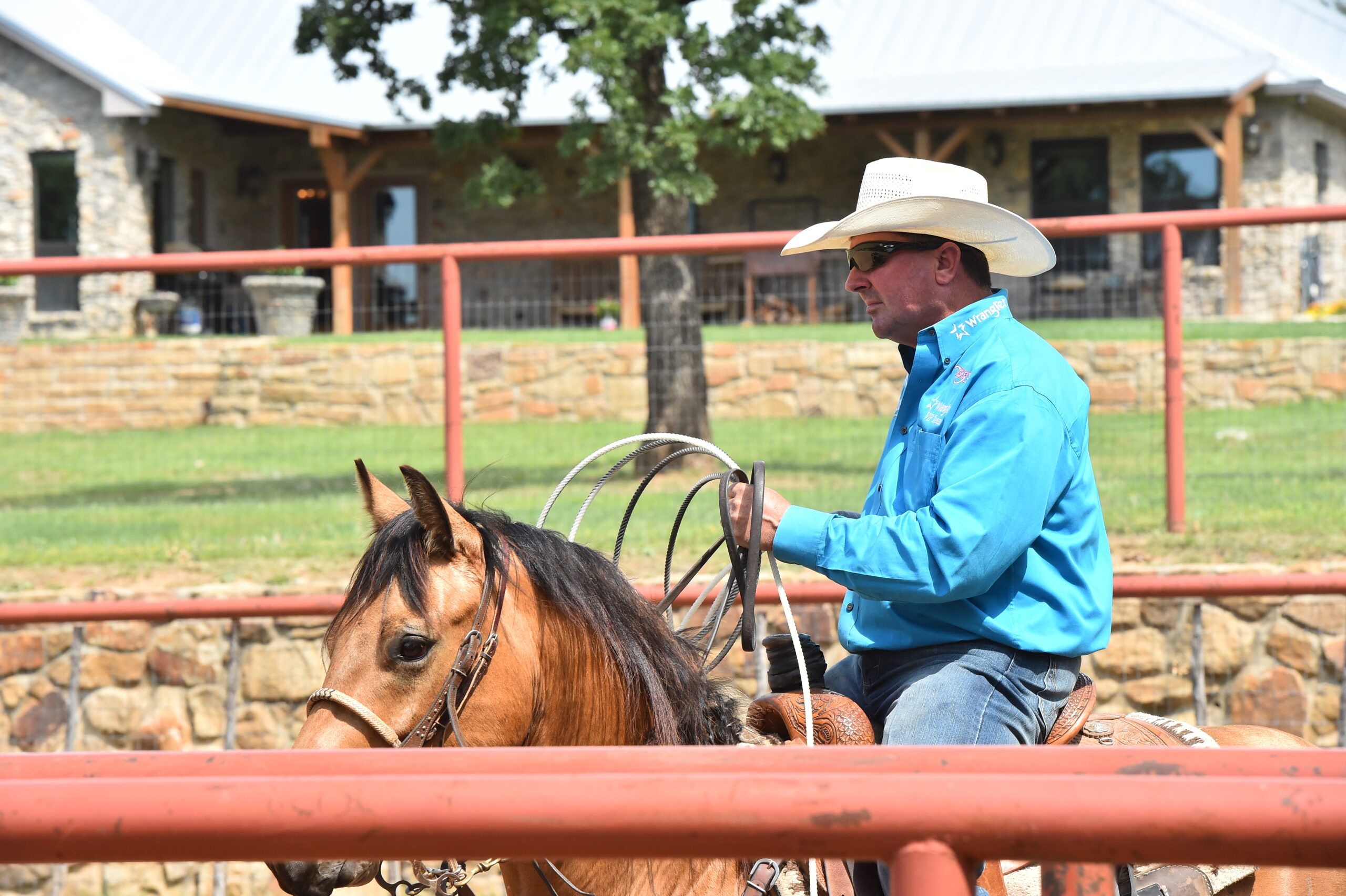Rope horse trainer Clay Logan uses better horsemanship to ride a better corner.
The corner is the most critical point of the run, setting up the way a heeler gets in time with the steer, delivers his rope and stops his horse. Talking about a good corner, though, is a lot easier than achieving one, especially when you’re making your own horses or tuning on ones you’ve bought. In these five steps, I will outline how to help your horse learn to listen to your left hand and feet throughout the run to set yourself up for success.
[Read More: Position When Heeling on a Longer-Strided Horse with Clay Logan]
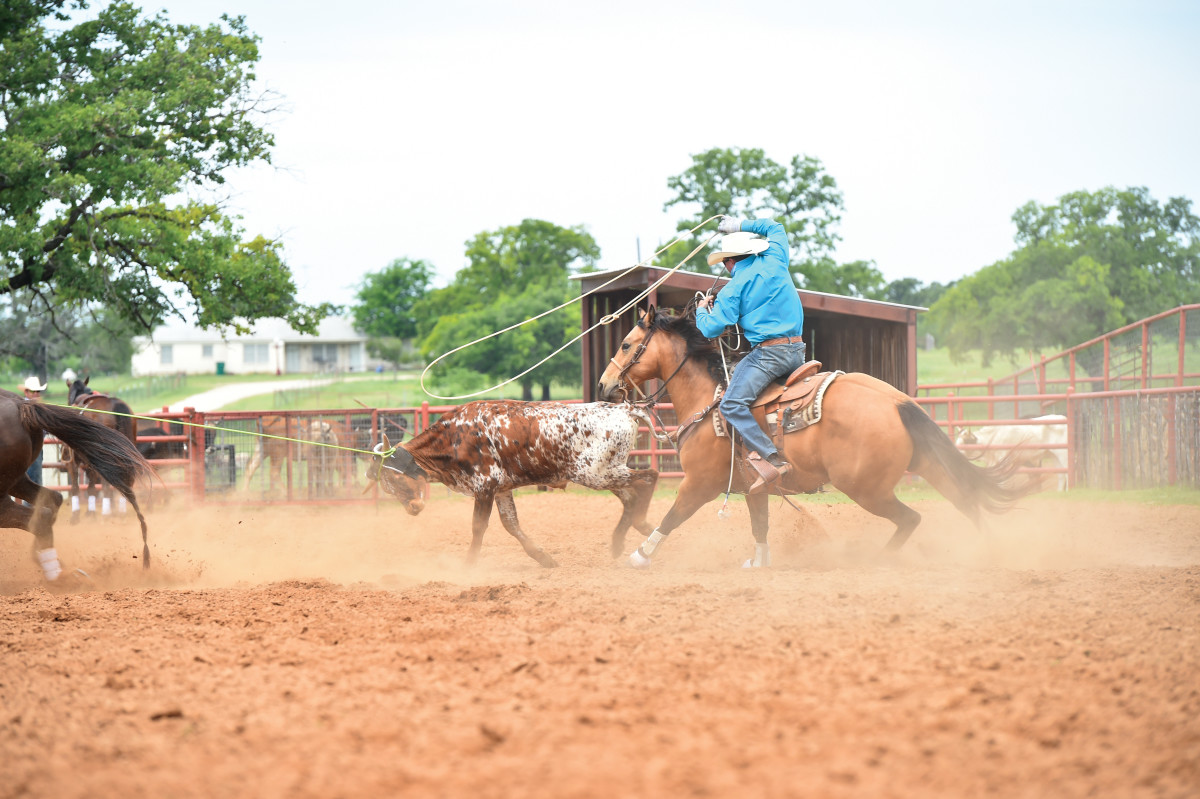
1) The first step to a good corner is to be sure your horse isn’t shouldering into it. A horse that shoulders will allow his shoulder to go left and his head go right as you try to pull him off. The horse’s nose will be on the wrong side of the cow, and that will block your vision of the steer when you turn. From day one, we start our horses on the Smarty and get them patterned to avoid shouldering from the beginning.
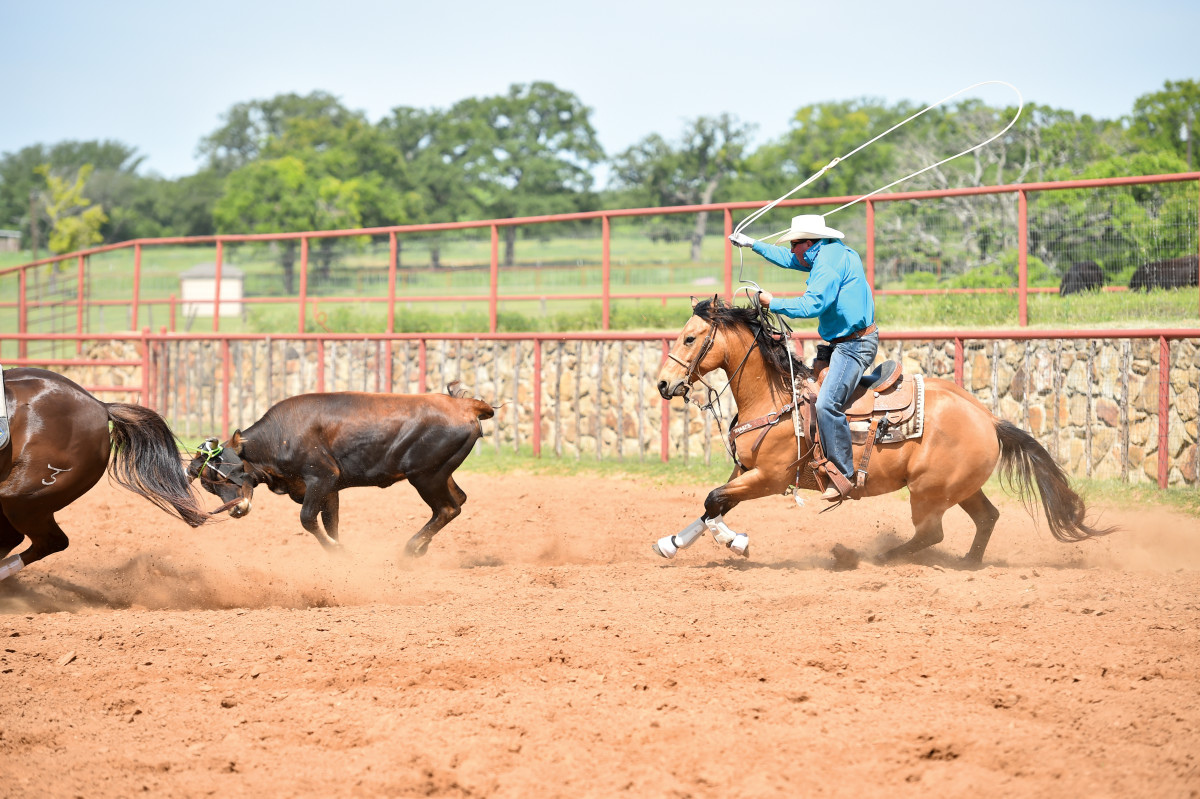
2) When they get the pattern and aren’t afraid of the rope anymore, we’ll go to live cattle. Going down the arena, often they’ll start to anticipate and want to move with the head horse. If my horse starts to lean with his shoulder into my hand, I will pick him up and move him to the right. If he doesn’t respond, I will stop him, turn him around and go run another steer. The amount of pressure on the reins and how hard I get after each horse depends on how he’s responding to me. If he grabs a hold of the bridle, I’ll correct him pretty aggressively with my hands and feet. If he’s just leaning on me, I’ll just pick him up and move him across the pen.
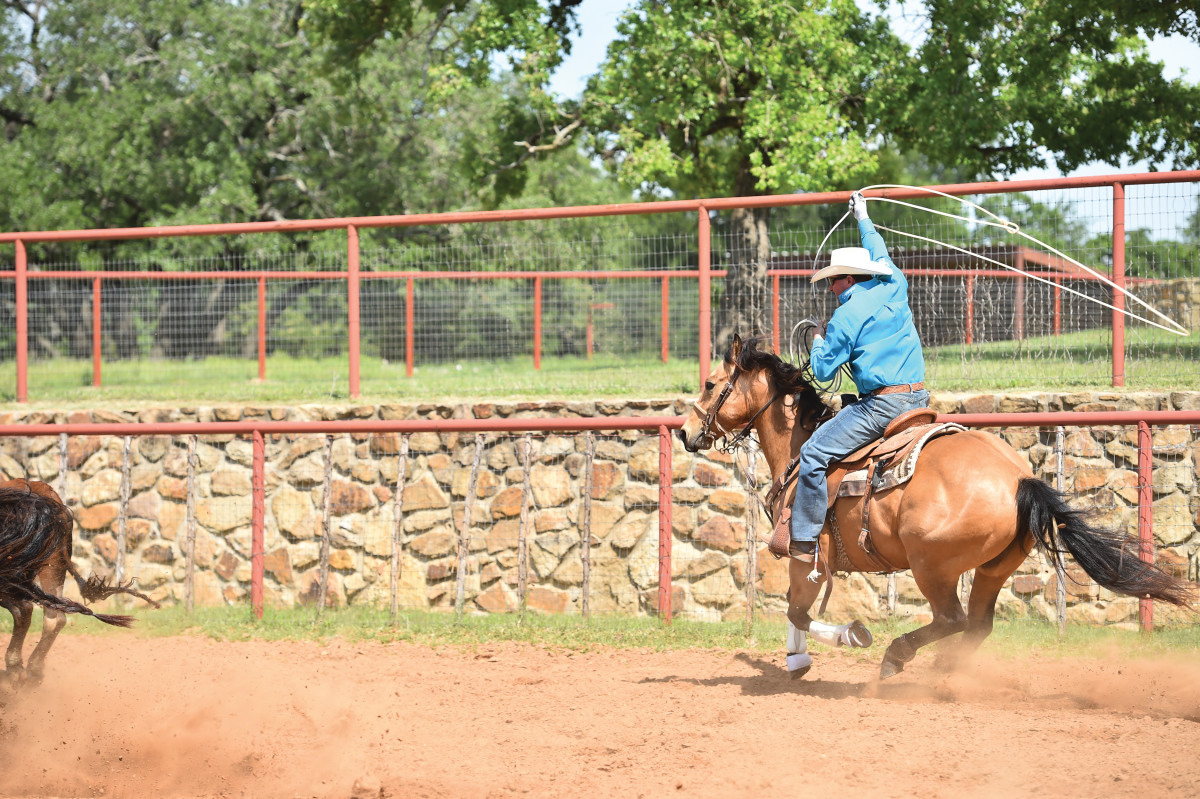
3) If a horse is wanting to shoulder through the corner, I might tell the guy who works for me to rope the steer and then take that steer a few more strides down the arena. I can fix a lot in one run by asking him to stay out and not making the shouldering into a big deal. Just holding him up and asking him to listen a few short strides down the pen is usually enough to get his attention.
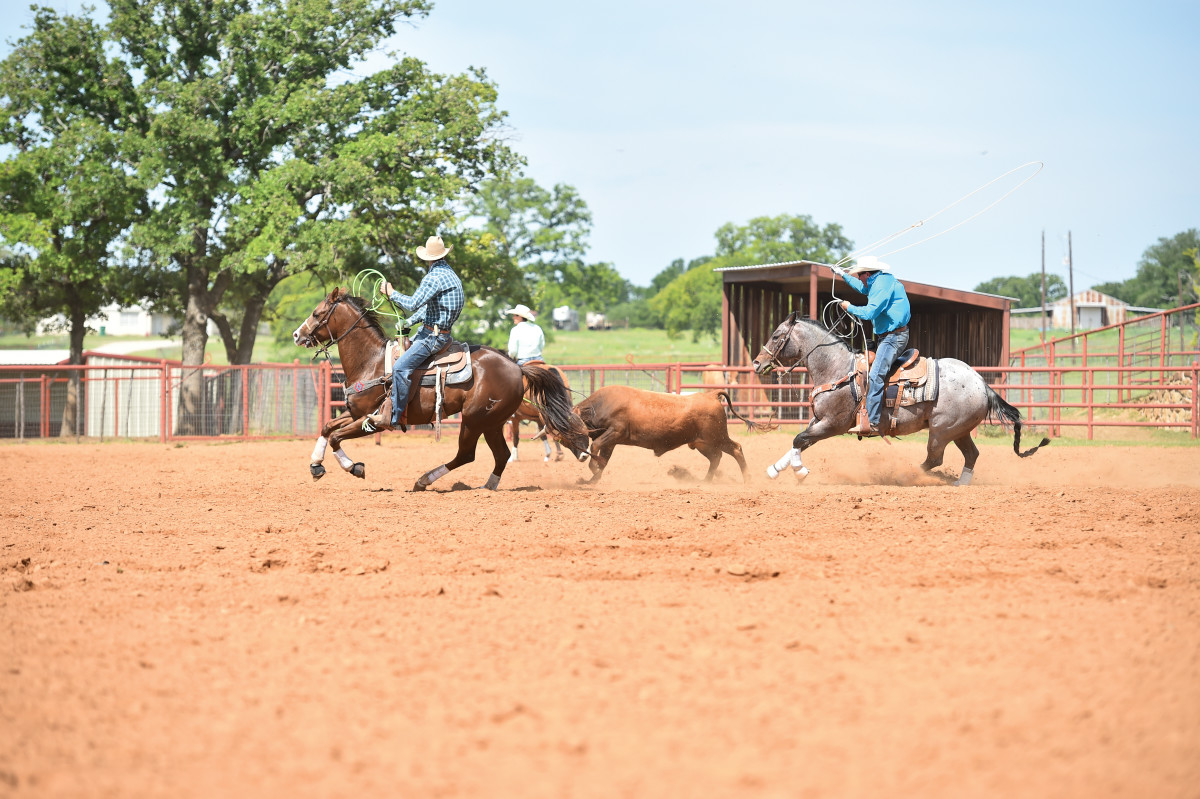
4) After you’ve got control of your horse’s shoulders entering and through the corner, you want to be sure his speed is in time with the steer. That means not going through the corner too fast or too slow. Really talented heel horses stay in time with the steer, but you’ll want to be sure your horse is listening to your hand and feet and getting around the steer in a timely fashion.
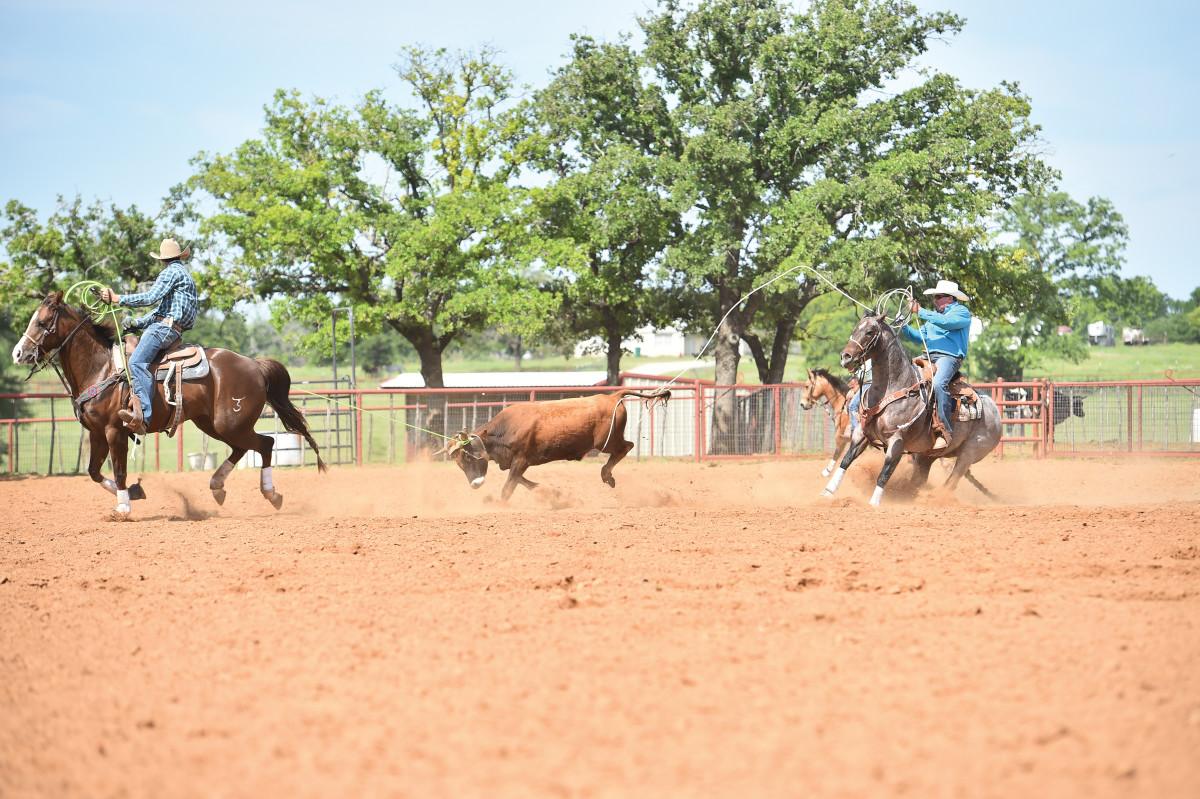
5) When you’ve entered the corner without your horse leaning and he’s in time with the steer, that sets up a great finish to the run—whether you’re riding a hard stopper or not. Not every horse is going to stop hard. You’ve got to go with what you’ve got to work with. The best training job you can do is to train your horse to its full athletic potential. If the horse isn’t a big stopper, he just isn’t a big stopper. The ones who want to stop, you can show them by picking them up with the bridle reins and squeezing your feet and showing them with your rope to stop. I’m going to use my rope and my body position. I’m going to sit down and push my feet forward a little bit. You can use the speed of your rope to teach your horse to stop. You can pull on your horse, but you’ve got to show him how to stop and know they won’t all have a big stop.




